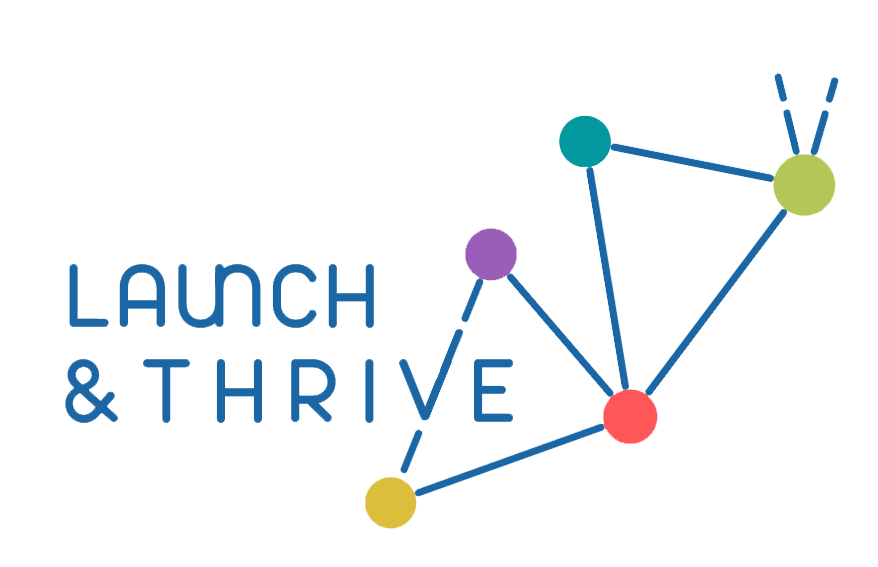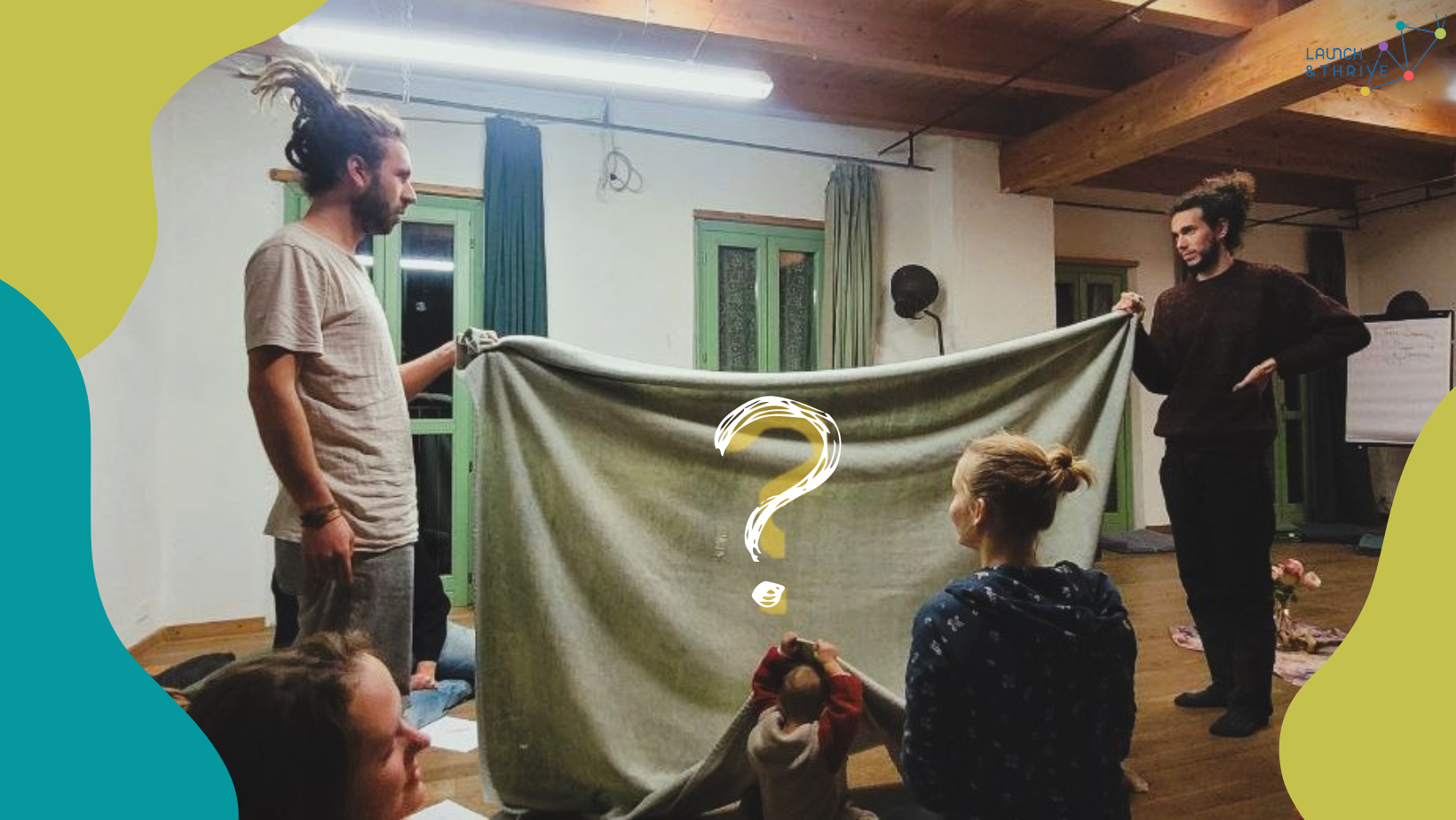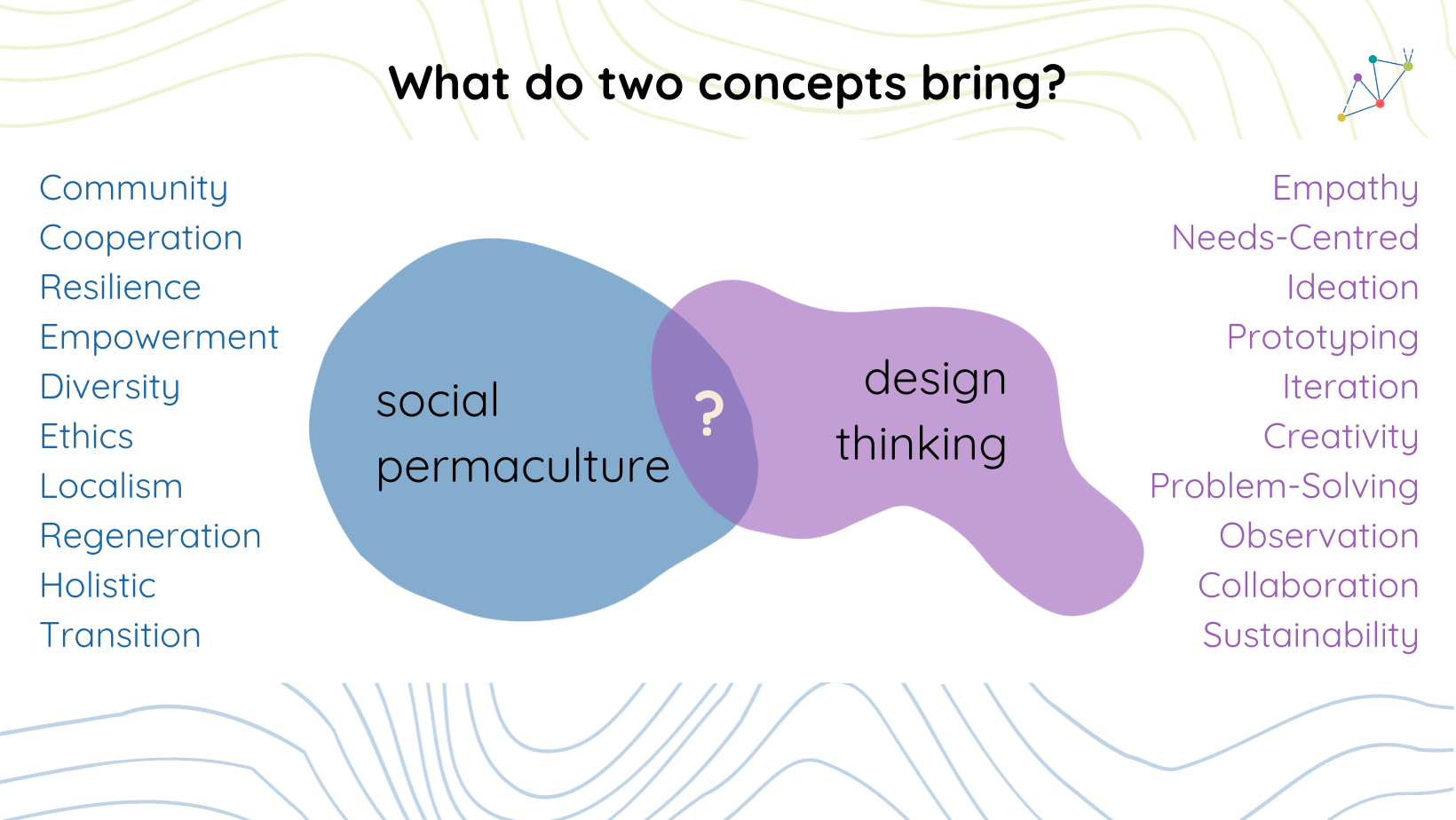Integrating concepts: when the ecovillages meet design
| Site: | GEN Europe's learning platform |
| Course: | Launch & Thrive Online Learning Package |
| Book: | Integrating concepts: when the ecovillages meet design |
| Printed by: | Guest user |
| Date: | Tuesday, 28 October 2025, 6:37 PM |
Description

1. Module introduction
In our introductory module, "Into the Methods," we embark on a transformative journey where networks cross their roads with design. By integrating Social Permaculture and Design Thinking, we forge a powerful framework that merges sustainability, innovation, and storytelling.
Social Permaculture lays the foundation, focusing on sustainable living and community resilience. Meanwhile, Design Thinking fuels creativity and problem-solving, emphasizing empathy and innovation.
Throughout our exploration, we highlight the interconnectedness of these methodologies. From holistic problem-solving to fostering resilience and collaboration, the synergy between Social Permaculture and Design Thinking offers a roadmap for sustainable innovation.
As we delve deeper into each approach, we encourage embracing diversity to unlock new pathways for collective transformation. Join us as we navigate this dynamic intersection of methodologies, harmonizing people, planet, and purpose.
We are aware that this does not exhaust the working methodology and there are many approaches to working with networks. We propose this type of view, which adds to already existing methods, such as CLIPS or the five dimensions of ecovillage sustainability. We will briefly describe these and provide useful links where to find more data for those who do not know them yet.
2. What do those concepts bring to the Learning Process about the Networks?

Compiling the two approaches—Social Permaculture and Design Thinking, — can create a powerful framework that combines sustainability, innovation, and storytelling.
This can enable you to embark on a transformative journey where sustainability, innovation, and powerful storytelling converge. In this immersive experience, we explore the powerful synergy of two dynamic approaches: Social permaculture as a basis, and Design Thinking as a dynamic process with narrative accents.
Social Permaculture as a Basis: Delve into the principles of social permaculture, where sustainable living and community resilience are the foundations. Learn how permaculture's ecological wisdom can be seamlessly applied to human systems, creating harmony between people and the planet.
Design Thinking as a Dynamic Process: Discover the art of Design Thinking—a dynamic, human-centred problem-solving process. Unleash your creativity, empathy, and innovation to tackle complex challenges with precision and agility. Witness how this iterative approach empowers you to co-create meaningful solutions.
For our tools section, we also grasped some of the CLIPS methods. It is because some of the educators engaged in the creation of the OLP have abundant experience with successfully adapting CLIPS-inspired tools. We believe, that if the dedicated and open-minded group can make big steps in their community-building path the method has this “thing that makes it work” - can be positively scaled up and applied to the development of the organization creating the network!
Throughout this exploration, you'll gain practical insights, engage in hands-on exercises, and connect with a global community of change-makers. Whether you're a sustainability enthusiast, a design thinker, or a storyteller at heart, this journey offers a roadmap for sustainable innovation that harmonizes people, planet, and purpose.
3. What are the relations between the two concepts
Connecting these concepts and shaping a learning path based on them - is a fascinating process (at least it was for us!)
While each concept has its unique focus and context, the overlap in principles and themes highlights their interconnectedness and the potential for integrating these approaches to create more sustainable, innovative, and transformative solutions for both personal and network-scale challenges.
What do these methods have in common?
Social permaculture, and design thinking, are two distinct concepts that share some common principles and themes, particularly in the context of personal and societal growth, problem-solving, and transformation. By combining them we can gain:
Holistic Approach
All three concepts emphasize a holistic approach to understanding and addressing challenges. Social permaculture considers the interconnectedness of ecological, social, and economic systems. Design thinking encourages a comprehensive understanding of network members’ needs and experiences. Both of them explore the various stages of personal or network growth and transformation in a holistic manner.
Problem-Solving and Innovation
Design thinking and social permaculture both emphasize innovative problem-solving. Design thinking is a structured approach to creative problem-solving that involves empathizing with your collaborators, defining problems, ideating solutions, prototyping, and testing. Social permaculture applies similar principles to sustainable and regenerative design in social systems. Both of them also involve overcoming challenges and solving problems as the hero progresses through different stages.
Adaptation and Resilience
Social permaculture emphasizes adaptability and resilience. Social permaculture designs systems that are adaptable to changing conditions and emphasize resilience in the face of disturbances. Similarly, the design process often involves a person or a group facing unexpected obstacles and developing resilience and adaptability to overcome them.
Personal Growth and Transformation
The design thinking is based on a narrative framework that explores the “persona” profile of personal growth, transformation, and self-discovery through challenges and trials. Similarly, design thinking and social permaculture can lead to personal and collective transformation as individuals and networks engage in creative problem-solving and sustainable design.
Empathy and Collaboration
Design thinking and social permaculture both emphasize empathy and collaboration. Design thinking encourages understanding and empathizing with your team’s perspectives to create solutions that meet their needs. Social permaculture involves understanding and working with the needs of local communities and ecosystems.
Cycles and Phases
The design thinking is composed of distinct phases, including the call to adventure, challenges and trials, transformation, and return. What is more, it follows a cyclical process of iteration and refinement. Social permaculture also involves cyclical processes in ecological design and regenerative systems.
4. How do these concepts complement each other?
There are certainly differences of course - this is the reason we decided to combine them! We will show it in the example of comparing social permaculture to the two other methodologies.
Social permaculture has certain elements that may not be as prominently emphasized in design thinking but are crucial for network development:
First, an ecosystem and environmental integration. Social permaculture explicitly integrates ecological principles into the network design process, considering the relationships between human systems and the natural environment. It focuses on creating harmonious and regenerative systems that benefit both people and the planet. Design thinking may not emphasize this ecological integration to the same extent!
Second, ethical and social justice framework. Social permaculture often operates within an ethical framework that includes principles such as "care for people," "care for the Earth," and "fair share." It prioritizes social justice, equity, and community well-being as integral components of any development process. While design thinking may touch on empathy and community engagement, it may not explicitly emphasize ethical principles to the same degree.
Thirdly, of course, permanence and long-term sustainability. Social permaculture is rooted in the concept of permanence, aiming to create systems that endure and thrive over the long term. It considers intergenerational sustainability and designs with future generations in mind. Design thinking may not necessarily emphasize the same degree of long-term sustainability and intergenerational impact.
Next is cultural regeneration. Social permaculture seeks to regenerate cultural practices, traditions, and knowledge within communities. It values local wisdom and encourages the revitalization of cultural heritage as an integral part of sustainable design. While design thinking may consider cultural context, it may not focus as explicitly on cultural regeneration.
Fifth is community empowerment and ownership: Social permaculture places a strong emphasis on community engagement, empowerment, and ownership in the design process. It involves local communities in co-designing and co-creating solutions that meet their specific needs. While design thinking may involve user-centred approaches, it may not necessarily emphasize the same level of community empowerment.
Lastly, natural patterns and biomimicry: Social permaculture draws inspiration from natural patterns and biomimicry, looking to nature's designs for guidance in creating sustainable human networks. It seeks to emulate the efficiency, resilience, and adaptability found in natural ecosystems. Design thinking may not always incorporate this emphasis on mimicking natural processes.
Social permaculture's strengths lie in its ecological integration, ethical framework, focus on long-term sustainability, cultural regeneration, community empowerment, holistic systems design, and inspiration from natural patterns. These elements may not be as prominently featured in the design thinking approach, which focuses on problem-solving, innovation, personal growth, and narrative structure.
5. (Bio)diversity is the key!
Even though Social Permaculture may seem a complete and abundant inspiration for the Network's development we believe in diversifying the approach of learning about the networks. Yes, (bio)diversity is also an intrinsic part of permaculture philosophy! In order to deepen the understanding of the processes of launching and thriving the network we triangulate the methodologies, bringing a kind of 3D reality into the learning path.
On the other hand, Design thinking can play a significant role in the development of an ecovillage by providing a structured approach to problem-solving, fostering innovation, and ensuring that the community's ecological, social, and economic needs are effectively addressed. The iterative and person-centred nature of design thinking aligns well with the complexities of creating a sustainable community, enabling the ecovillage network to evolve and thrive while addressing the needs of both its residents and the environment.
Indeed, by applying various stories from the different networks to the development of an ecovillage network, the community of communities can better navigate challenges, celebrate achievements, and create a narrative that resonates with its members and the broader society, fostering a sense of purpose and shared identity. Stories can be found in the manual.
In this module, we dig deeper into each of the methodologies inviting you to stay open to each of the possibilities and to pick those aspects of them that suit the best to the current state of the art of your network or your development.
6. Useful resources
Here are very interesting and handy resources to deepen your understanding of the presented methods:
- People & Permaculture by Looby Macnamara (book introduction)
- Integrating design thinking with sustainability science (scientific, a bit "nerdy" paper)
- Scaling up sustainability: Concepts and practices of the ecovillage approach
- Design thinking for sustainability: Why and how design thinking can foster sustainability-oriented innovation development
- Patterns of nature: Bio-systemic design thinking in meeting sustainability challenges of an increasingly complex world
video: Biomimicry in action | Janine Benyus